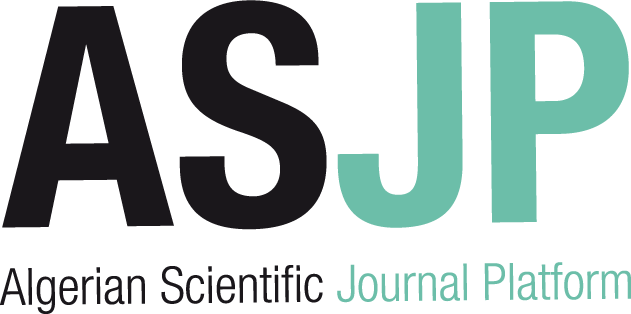[article]
| Titre : |
Tornado-induced wind loads on a low-rise building |
| Type de document : |
texte imprimé |
| Auteurs : |
Haan, F. L. Jr., Auteur ; Vasanth Kumar Balaramudu, Auteur ; P. P. Sarkar, Auteur |
| Année de publication : |
2011 |
| Article en page(s) : |
pp. 106-116 |
| Note générale : |
Génie Civil |
| Langues : |
Anglais (eng) |
| Mots-clés : |
Tornado Wind engineerin Low-rise buildings Bluff-body aerodynamics hazards |
| Index. décimale : |
624 Constructions du génie civil et du bâtiment. Infrastructures. Ouvrages en terres. Fondations. Tunnels. Ponts et charpentes |
| Résumé : |
Current design wind loads for buildings and other structures are based upon model tests in low-speed boundary-layer wind tunnels that generate straight-line winds. Winds resulting from tornadoes that can occur during extreme weather events such as thunderstorms or hurricanes differ greatly from conventionally conceived atmospheric boundary-layer winds. This paper presents transient wind loads on a one-story, gable-roofed building in a laboratory-simulated tornado and compares them with the provisions of building standards. Tornadoes were simulated in smooth, open terrain with vortex core diameters from roughly five to twelve times the plan dimension of the building model (0.46 to 1.06 m). A 1:100 scale model of a building with dimensions of 9.1 m×9.1 m×6.6 m and gable roof angle of 35° was used for this study. Comparisons of peak loads measured in this study showed that tornado-like vortices can generate load coefficients greater than those prescribed by ASCE 7-05 for straight-line wind over open terrain. For lateral forces, these coefficients were found to be as much as 50% larger than the standard provisions. Vertical uplift coefficients were found to be two to three times the provisions most likely due to the effect of a large negative static pressure generated at the core of the vortex.
|
| DEWEY : |
624.17 |
| ISSN : |
0733-9445 |
| En ligne : |
http://ascelibrary.org/sto/resource/1/jsendh/v136/i1/p106_s1?isAuthorized=no |
in Journal of structural engineering > Vol. 136 N° 1 (Janvier 2010) . - pp. 106-116
[article] Tornado-induced wind loads on a low-rise building [texte imprimé] / Haan, F. L. Jr., Auteur ; Vasanth Kumar Balaramudu, Auteur ; P. P. Sarkar, Auteur . - 2011 . - pp. 106-116. Génie Civil Langues : Anglais ( eng) in Journal of structural engineering > Vol. 136 N° 1 (Janvier 2010) . - pp. 106-116
| Mots-clés : |
Tornado Wind engineerin Low-rise buildings Bluff-body aerodynamics hazards |
| Index. décimale : |
624 Constructions du génie civil et du bâtiment. Infrastructures. Ouvrages en terres. Fondations. Tunnels. Ponts et charpentes |
| Résumé : |
Current design wind loads for buildings and other structures are based upon model tests in low-speed boundary-layer wind tunnels that generate straight-line winds. Winds resulting from tornadoes that can occur during extreme weather events such as thunderstorms or hurricanes differ greatly from conventionally conceived atmospheric boundary-layer winds. This paper presents transient wind loads on a one-story, gable-roofed building in a laboratory-simulated tornado and compares them with the provisions of building standards. Tornadoes were simulated in smooth, open terrain with vortex core diameters from roughly five to twelve times the plan dimension of the building model (0.46 to 1.06 m). A 1:100 scale model of a building with dimensions of 9.1 m×9.1 m×6.6 m and gable roof angle of 35° was used for this study. Comparisons of peak loads measured in this study showed that tornado-like vortices can generate load coefficients greater than those prescribed by ASCE 7-05 for straight-line wind over open terrain. For lateral forces, these coefficients were found to be as much as 50% larger than the standard provisions. Vertical uplift coefficients were found to be two to three times the provisions most likely due to the effect of a large negative static pressure generated at the core of the vortex.
|
| DEWEY : |
624.17 |
| ISSN : |
0733-9445 |
| En ligne : |
http://ascelibrary.org/sto/resource/1/jsendh/v136/i1/p106_s1?isAuthorized=no |
|


 Ajouter le résultat dans votre panier Faire une suggestion Affiner la recherche
Ajouter le résultat dans votre panier Faire une suggestion Affiner la rechercheTornado-induced wind loads on a low-rise building / Haan, F. L. Jr. in Journal of structural engineering, Vol. 136 N° 1 (Janvier 2010)











